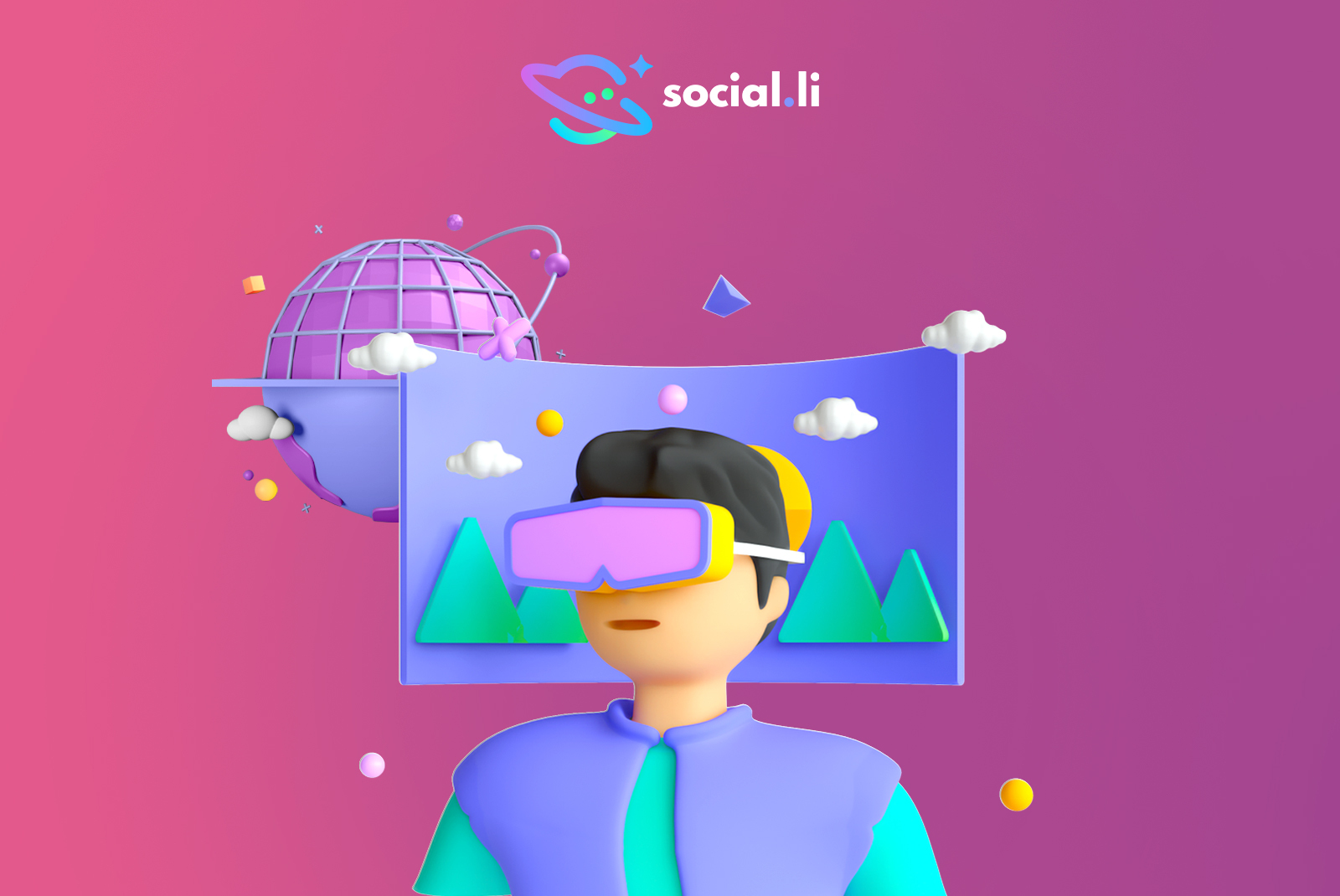A metaverse is a virtual world that can be used by many people at the same time. It is usually developed by a company or organization, and it is made up of many different servers that are all connected to each other. But the metaverse is often thought of as an alternative world as it allows users to create and inhabit virtual spaces that can be customized and interacted with in ways that are similar to the physical world.
Some people believe that the Metaverse will eventually become a more popular and important world than the physical world, as it offers more freedom and flexibility. But the metaverse is not a replacement for reality. In fact, it can actually help people to connect with others and expand their social circles just like the internet and smartphones do today but adding a more immersive experience to the already existing one.
Additionally, the Metaverse can be accessed from anywhere in the world, making it a convenient place to socialize and conduct business. Now imagine just having to wear a VR headset, you could take a quick tour to Bali’s beautiful beaches and enjoy some time in peace taking a sunbath. Doesn’t this feel like an easy and affordable way to take breaks? Of course it does. So let’s look at how the metaverse is developed and how it will function.
What Technologies Power the Metaverse?
Augmented Reality
Augmented reality (AR) is a technology that superimposes computer-generated images on a user’s view of the real world, providing a composite view.
Virtual Reality
Virtual reality (VR) is a computer-generated simulation of a three-dimensional image or environment that can be interacted with in a seemingly real or physical way by a person using special electronic equipment, such as a helmet with a screen inside or gloves fitted with sensors.
Blockchain
Blockchain is a digital ledger of all cryptocurrency transactions. It is constantly growing as “completed” blocks are added to it with a new set of recordings. Each block contains a cryptographic hash of the previous block, a timestamp, and transaction data. Bitcoin nodes use the block chain to differentiate legitimate Bitcoin transactions from attempts to re-spend coins that have already been spent elsewhere.
Internet of Things
The Internet of Things (IoT) is a system of interconnected devices and sensors that are able to collect and exchange data.
3D Modeling
3D modeling is the process of creating a three-dimensional representation of an object or scene.
Spatial Computing
Spatial computing is a term that refers to the use of computers to represent and manipulate spatial data. It is also sometimes called 3D computing or 4D computing.
Edge Computing
Edge computing is a type of computing that brings data storage and processing closer to the location where it is needed. Edge computing is used in cases where sending data to a central location would result in too much latency, or where the amount of data that needs to be processed is too large.
How is a Metaverse Developed and How Does it Work?
As the metaverse is still in development and there is no one agreed-upon definition of what it is. However, some possible requirements could include powerful computer hardware and software, tools for creating and manipulating digital content, and networking infrastructure to connect users from around the world.
The development of a metaverse requires a lot of planning and coordination. Developers need to create a detailed map of the metaverse, and decide how users will interact with each other and with the environment. They also need to create the avatar system, and design the game mechanics and economy.
Creating a metaverse is a complex and time-consuming process, but it can be a very rewarding experience for users. Once a metaverse is up and running, it can provide a rich and immersive experience for users from all over the world. Metaverses are constantly evolving, and new features and content are added on a regular basis. Developers are always working to improve the user experience and make the metaverse more immersive and realistic.
Users can create their own avatars, or digital representations of themselves, and explore the metaverse. They can interact with other users, and participate in activities or games. Metaverses often have their own economy, and users can buy and sell items within the metaverse.
Is the Metaverse Finally Here?
While there are some platforms using the concept of metaverse and people might think metaverse is ready for its new users to jump in and try it out but the truth is that the metaverse is still in development. It is not even close to reaching its true potential. The primary reason for this is that the technological infrastructure needed to support a fully realized metaverse has not yet been developed. In addition, there is still much work to be done in terms of creating the content and experiences that will make up the metaverse.
There is no agreed upon definition of the metaverse, so it is difficult to say what is restricting its development. Some believe that the technological infrastructure is not yet developed enough to support a metaverse, while others believe that the lack of a clear purpose or use case is holding it back. In general, the metaverse is still in its early stages of development, so it is likely that a number of factors are restricting its growth.
Some experts believe that the metaverse will be fully developed within a few decades, while others believe that it will take centuries. It is difficult to predict the future of the metaverse, but it is clear that it will continue to evolve and grow over time.
How Much Computing Power Does it Take to Power the Metaverse?
The metaverse provides a more immersive way to interact with people and hence the computational needs are also high for the same. Consider what it takes for two individuals to connect virtually with details like their individual avatars, the environment, graphics, real world 3D objects, etc.
This not being enough, it is also needed for the data to be rendered in real-time to other participants. The requirements to put such a complex platform to existence without interruptions are very high and keep on evolving. In today’s world, even having a video call without network errors is next to impossible and still the infrastructure to power this screen-only communication requires high bandwidth and good hardware with error free software. Now imagine the amount of resources needed for the functioning of a platform like the metaverse which keeps a track of every single action of a user and renders it to other participants.
Let’s say it can be done for a few participants easily but the question of scalability is not going out of the syllabus anytime soon. As we imagine this to scale for millions of people we can get an idea that the resources available today are not enough for the broader vision the metaverse claims to establish.
How Much Computing Power Will it Take in the Future?
Intel, one of the leading chip-maker companies, said that the metaverse will supposedly need 1000 times of computational power than what we have today. It is clear that the metaverse requires a lot of major upgrading to the Internet.
The computing can either be done locally on the user’s hardware or remote by the platform infrastructure. The local processing could cost a bit more but would be favorable for speed requirements while the remote processing would slow the process down and would need a huge amount of computational power by the platform providing metaverse services.
Final Thoughts
The technology necessary to power the metaverse doesn’t yet exist but the good news is that, as technology improves, the amount of computational power required will decrease. As the metaverse grows in popularity, the computational power required to keep it running will continue to increase. With the right planning and investment, the metaverse can continue to grow and thrive for years to come.









Your Own Metaverse
Interoperable Web 3 Metaverses Built on Layer-1 Blockchain.